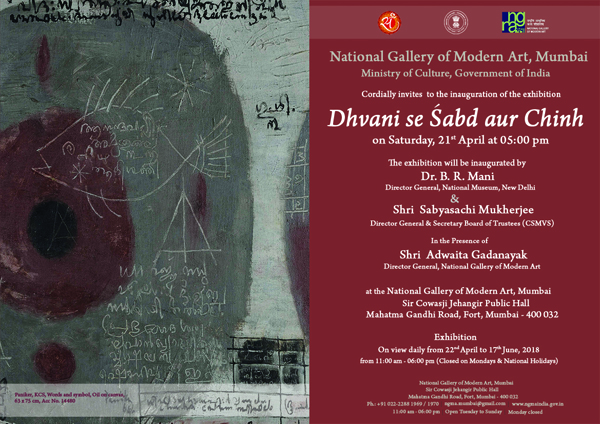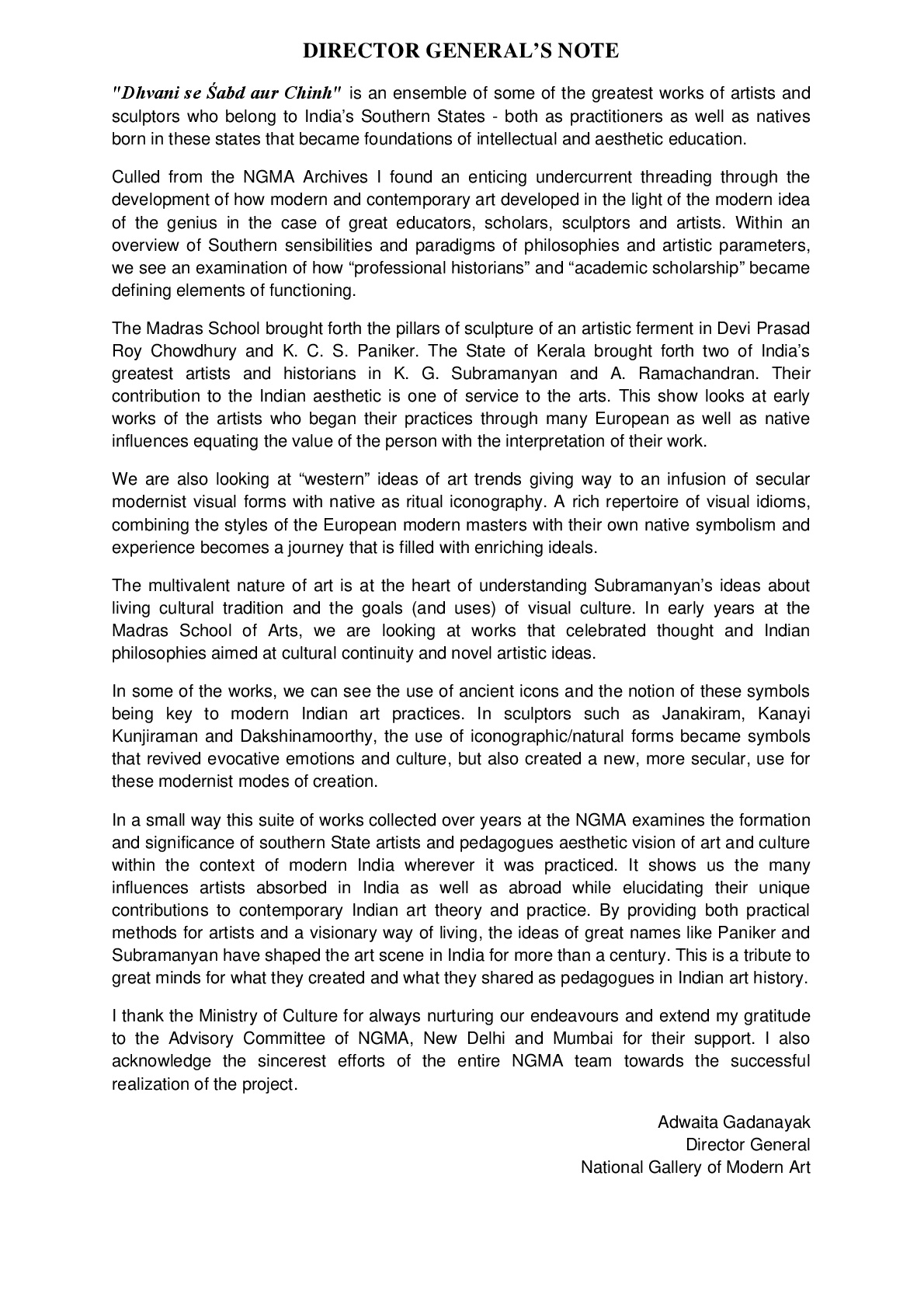Ministry of Culture
Dhvani se Śabd aur Chinh Exhibition inaugurated at NGMA, Mumbai
Posted On:
21 APR 2018 7:15PM by PIB Mumbai
An exhibition titled "Dhvani se Śabd aur Chinh” was inaugurated at National Gallery of Modern Art, Mumbai today evening. Curated by Adwaita Gadanayak and his team, the exhibition speaks to us about southern sensibilities and singular identities that were forged through scholarly adaptations, multiple skills and experiments that were seeking to juxtapose the notions of the modern with the traditional. It identifies artists who practiced in Southern states as well as artists who were born there or had family trees and moved up North to become the greatest practitioners and pedagogues. We are looking at a period that just followed the Partition wherein an idea of tradition was in its genesis - as it oscillated between symbolic fantasy (Madras group) and the knowledge of truths that were generated by pure practice. The czar of the Madras Movement, K.C.S. Paniker – believed that an artist had to foreground tradition and cultural art forms and interpret these within contemporary sensibilities, leading to defining the regional modern particularly in Madras.

Hence, Paniker's regional modern was firmly fixed in the wedge between the visibility and identity of the southern artists nationally, and developing a visual language born of an Indian ethos - the vitality of the Indian spirit.
Historians have noted that the modernity which was established in Madras in the '60s integrated and blended pioneering visions of certain artist-teachers at the Madras School of Arts and Crafts.
The culling also includes Malayali veterans like K. G. Subramanyan, the cultural theorist, the philosopher, the art mandarin who taught seven decades of students as well as A. Ramachandran the scholar, the author, the art historian and the guru who taught a love for the immediate environment to his students.
“I want [my art] to flourish (so to say) in a ‘cloud of unknowing’,” K.G. Subramanyan explained in an interview, when asked about the process of his work. “For a centipede like me to start counting my legs is suicidal,” he elaborated in that distinctly witty yet acerbic manner of his, “It will freeze me into inaction.” The phrase, “cloud of unknowing”, is the ideal frame through which to look at Southern sensibilities and imagery.
It instantly conjures up that drifting restlessness which typically characterizes the traffic between the earthy and the ethereal in many of these works. Then again, it is the artist’s self-description as an unselfconscious centipede that, more than anything helps one to make sense of the profusion of paintings spread across these galleries at the NGMA. There is indeed an arduous degree of introspection and reflection about Southern sensibility and creativity — as if some artists indulged in a Dionysian ritual that revealed, quite naturally and effortlessly in an endless proliferation of images that cut across time and space to create corollaries in multiple contexts and complexities.
A look at the monumental work by Velu Viswanadhan signifies the truth that abstraction must be born out of the symbolism of a deeper experience - the incandescent flavour of the red hues and the geometry that creates succinct planes tells us that this is a nether journey built on rumination and realization and not superficial reflections of strokes and colour.
While the visual arts in the South charted trajectories that engaged with diverse media, techniques, materials, and concepts allowing articulation of creative expression also from within the social and cultural milieu, the Indian accent born of everyday idioms was also creating pathways. Between sculptures, paintings and prints we see an offering of possibilities mirroring the symbolic, the sacred and the secular.
Sculptures and paintings picked out from the NGMA Archives is an exercise that moves beyond the realms of exploration and intellectual thirst. In a large number of works that were created within and around the Deccan plateau regions and beyond the Western and Eastern Ghats this group of works is one that defines the many art practices that were born out of European influences and moved beyond to embrace and find deep rooted meaning in Indianesque histories and narratives that explored native elements over time.

***
DJM
(Release ID: 1529845)
Visitor Counter : 417